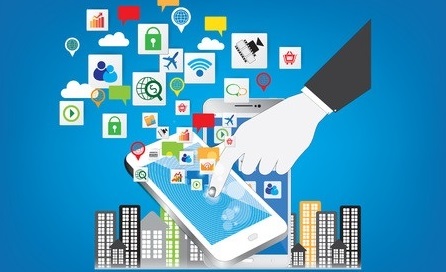
“CIOs need to master two different dimensions of mobility: excel in traditional mobility and innovate in the post-application era. Portable technology has always been about finding new ways to do old things, just transferring a paper form to a tablet is not a good use of portable technology. The ideal is to change business processes and find new ways to tackle old problems,” explains Nick Jones, vice president and analyst emeritus at Gartner.
The definition of the term “portable” will change over the next five to ten years. Instead of devices, mobility will mean being ubiquitous in relevant services, delivered anywhere, by anyone or anything, to anyone or anything.
Opportunities for Innovation
Wearable devices are being applied in interesting ways in business, such as using 3D glasses to search for and sort materials in a warehouse. Bots, chatbots and virtual personal assistants (VPAs) will provide new ways to perform business functions. Humans will no longer be the only ones interacting with portable applications and devices as the Internet of Things (IoT) and portability come together.
Jones highlights three key areas to explore portable innovation in the enterprise:
1. Location sensor
"There are over 20 technologies for wireless tracking of objects indoors and many exciting ways to apply these technologies," says Jones. One example is the Bluetooth beacons being deployed at railway stations on the new MTR Crossrail network to help inform and locate personnel and equipment.
In industry, microlocation can precisely tell a torque wrench which screw is attached to a machine, so it is possible to program the torque adjustment automatically, eliminating the risk of human error.
2. Sensors and Portable Applications
Combining IoT with portable applications presents many new possibilities for workplace automation. Gartner's Vice President encourages CIOs to think about this potential in their organizations.
“What data can sensors generate to combine with portable applications that allow your team to be more efficient and still enjoy their work more? Try to tie IoT together with your portability strategies and see what ideas come,” explains Jones.
An example is the use of sensors to generate work orders. When installed in places such as bathroom doors, wastebaskets or food cupboards, these sensors can be configured to identify when cleaning, recharging or maintenance is needed and thus alert the appropriate staff or supplier.
3. Enterprise VPAs
In addition to the already known VPAs (virtual personal assistance, in English) such as Cortana (Microsoft) and Alexa (Amazon), there are VPAs optimized for business use, such as EVA Openstream. Virtual personal assistants can automate or simplify many tasks. An example would be replacing filling out a form on the computer or phone to process an invoice with just using a voice command to an EVA saying "Okay, pay."
"Look in your business for innovation opportunities that use wearable technologies in both the consumer and employee-facing parts. You need to think about how these technologies can make the lives of your team and your customers easier using wearable devices and selected VPAs for work tasks,” adds Jones.












